Bees are back (below), a dependable indicator that mild temperatures have returned after a chilly week. They’re not likely to be around for long, and the garden’s march towards dormancy is evident following several nights with freezing temperatures. But, colorful flowers and berries remain despite an ever deepening blanket of leaves covering the garden. Someday, I’ll get around to clearing the paths, and then sometime before hellebores flower in February the deepest piles will be raked aside so that the earliest flowers can be seen.
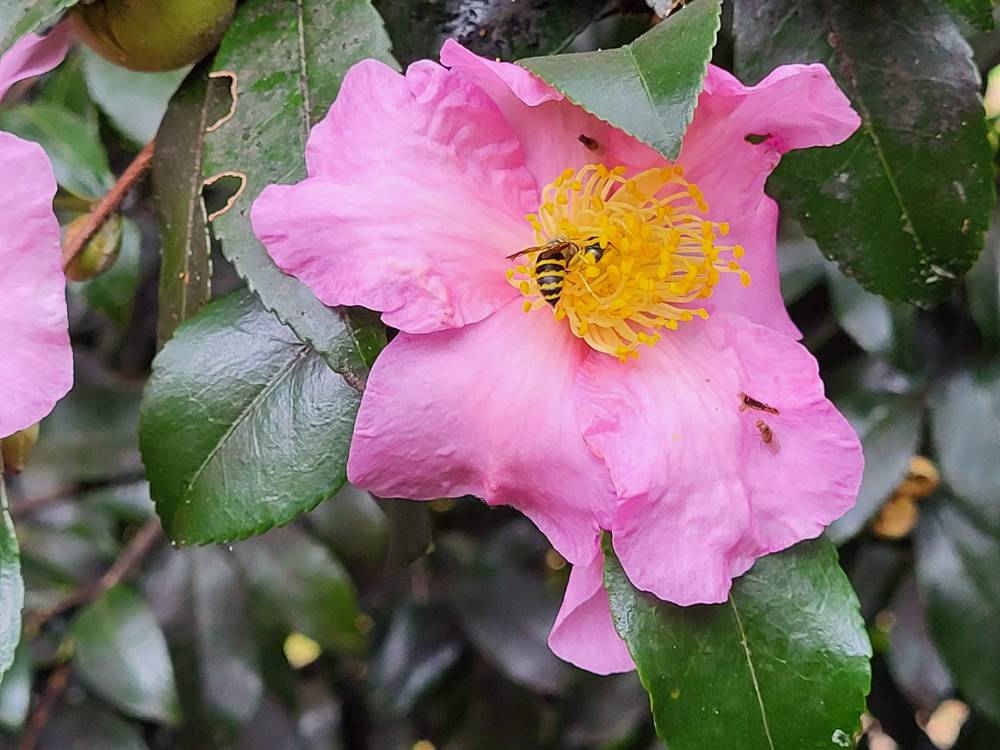
Autumn flowering camellias (above) are blooming, scattered numbers of flowers at a time as is their nature with flowering expected into December, at least. The tall evergreens were the cold hardiest available at a time when winter temperatures were consistently colder than in recent years. In their early years there were winters that damaged buds of equally hardy, spring flowering camellias, but recent winters with ten degree temperatures and milder are no challenge. Autumn flowering types have always flowered, but now there will be handfuls of blooms in mild spells through midwinter. Occasionally, bees leave their winter shelter on the mildest, sunny afternoons.
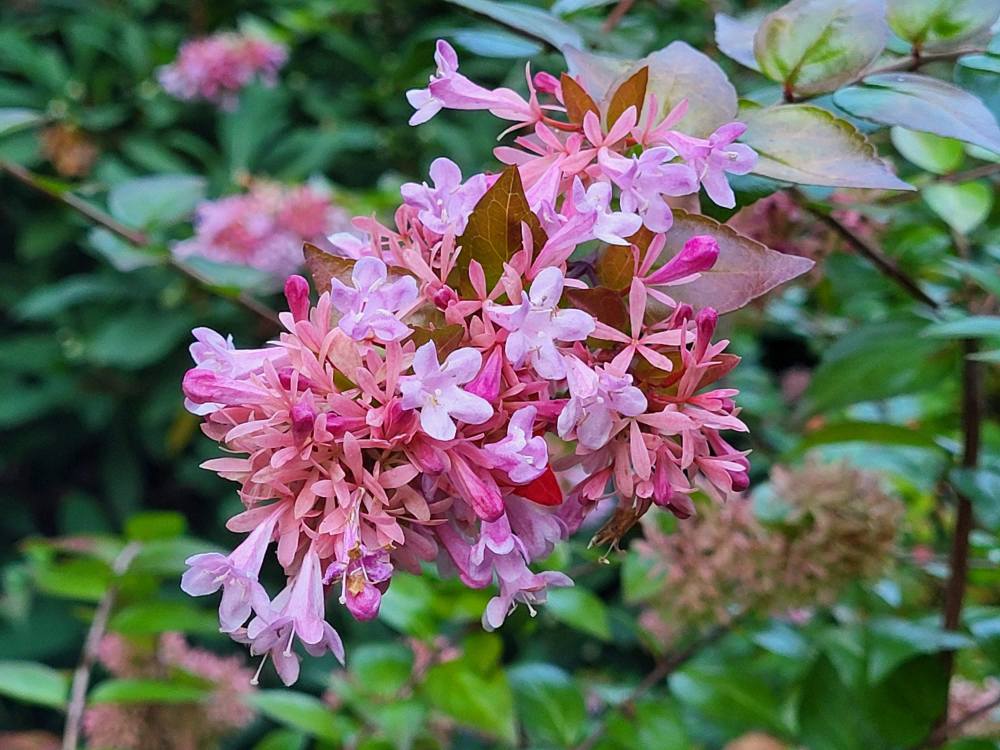
‘Canyon Creek’ abelia refuses to go into its dormant mode, with flowers that are hardly different than in August. How much longer will these last? I suppose flowering must end soon, but I’ll continue to enjoy this splendid shrub, one less in demand than more compact growing types with variegated foliage, but the best by far to my thinking.

Several common witch hazels (Hamamelis vriginiana ‘Little Prospect’, above) are flowering, with ones in shadier spots coming on a few weeks after one in late afternoon sun. The witch hazel, native to higher elevations in the area, are found as shaded, understory shrubs, so flowering is not hindered as with other witch hazels that flower in January and February in sunnier locations in the garden. With the staggered start to flowering, one or the other will flower into the new year when Vernal witch hazels take over.
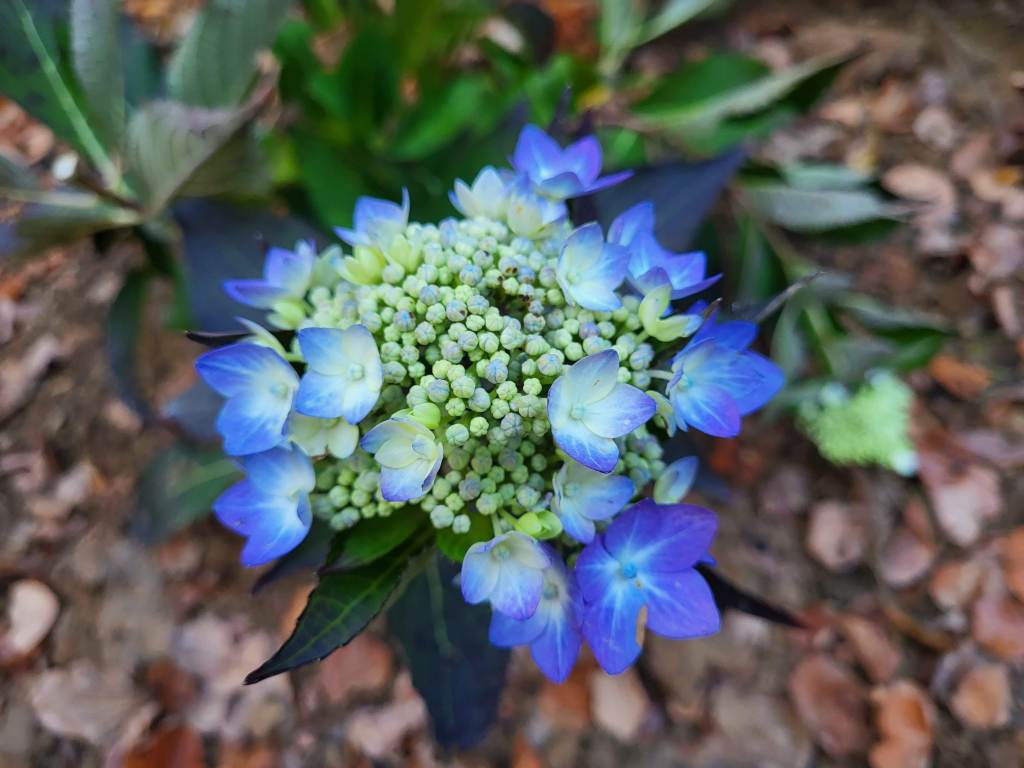
The last of the hydrangeas is flowering, a mountain hydrangea (Hydrangea serrata, above) with fading foliage but flowers just opening that made it through the freezes. There are several additional buds, but I expect this is it until late spring. Several mountain hydrangeas and mountain hydrangea crosses have been added this year, and these promise better repeat flowering next year than the standard mopheads. I find that lacecaps are much sturdier through winters, and while flowers are not as large and showy, the mountain varieties are wonderful hydrangeas.
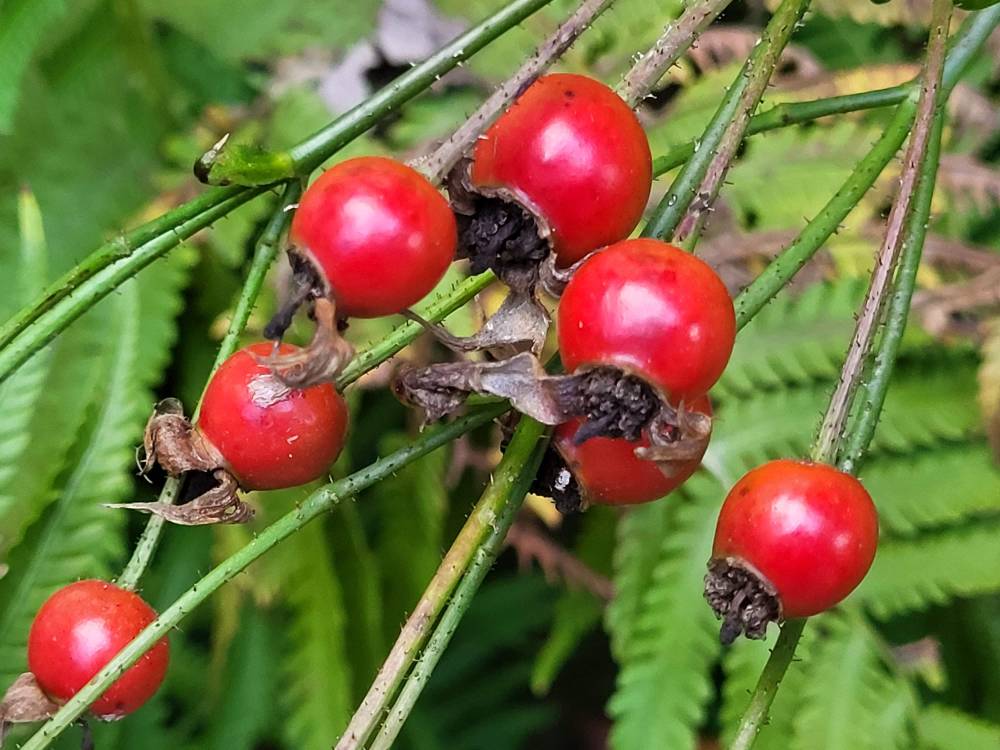
There are only a few roses in the garden, but this oldtimer with its name forgotten long ago continues to be a dependable repeat bloomer with few spotting problems. The large rose hips this autumn are a bonus.
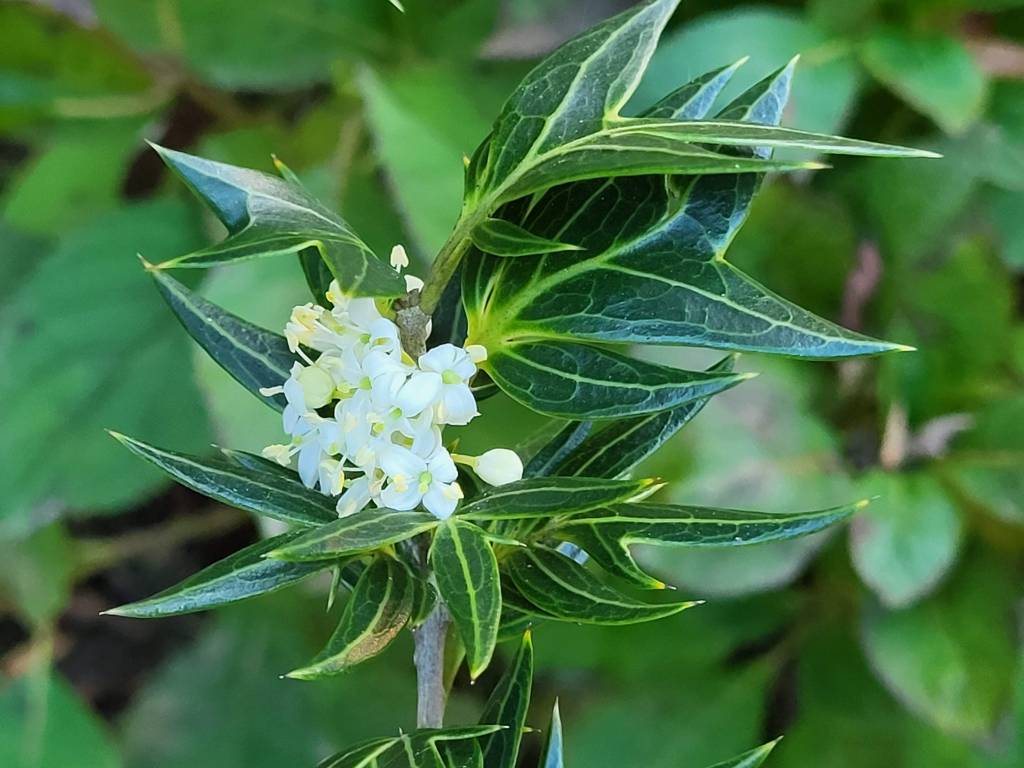
Two false hollies, the dagger tipped Osmanthus heterophyllus ‘Sasaba’ and the variegated and slightly friendlier ‘Goshiki’ will flower through mid to late autumn. I don’t understand how this works for pollination, but both are mildly fragrant to my poorly developed sense of smell. Two, much more fragrant Osmanthus fragrans might be permanently planted outside some day, but until I’m convinced mild winters are here to stay both are dug and brought indoors for the winter. Both could survive in the greenhouse, but I enjoy the reblooming ‘Apricot Echo’ with fragrant, orange flowers in the basement through the winter.
Can you explain exactly what ARE Rosehips ?? I thought it was better for the plant to trim them off, no?? THANK YOU for this WONDERFUL blog. 💕
Rose hips are the fruits that develop following pollination. Deadheading faded flowers encourages new flowers in reblooming varieties, instead of energy going to fruit. I do not deadhead, or at least very rarely. Within the rose hips are seeds.
I am also a huge fan of canyon creek abelias!! My favorite too – mine have also been blooming machines – but I mostly love the glossy colorful foliage, shades of green, yellow, and orange. I bought these from Meadows farms – I also bought 3 Japanese maples from MF this week on sale – 2 emporer 1s and a beautiful green Seiryu. They are all about 1 inch caliper, the Seiryu is over 6 ft tall, with most of the vigorous growth on top. It’s a beautiful tree, but I am a bit perplexed on how to encourage more branching and width – it’s an upright but also a lace leaf – I’ve been newly following your blog and think you have one – I was thinking I could make some selective heading cuts on the leaders? What would you suggest and when? Thank-you!
Welcome. The only pruning on two Seriyu maples that border the front walk was to remove lower branches so we could walk under it. The upright growth of your maples, and most nursery grown trees is due to close spacing. When they are planted with more space the trees will naturally spread. My two Seriyu are now about twenty feet tall and double the width, so their nature is to spread. Pruning branch tips will encourage growth of lateral buds, but Seriyu will spread with or without pruning.
And, pruning can be done when trees are dormant, though every year I must prune lower branches by late spring that hang down over the front walk and driveway. No harm comes from late spring or summer pruning, but most of Japanese maples’ growth is the spring flush, so a tree would not grow much to cover heavy pruning.
Thank-you!!